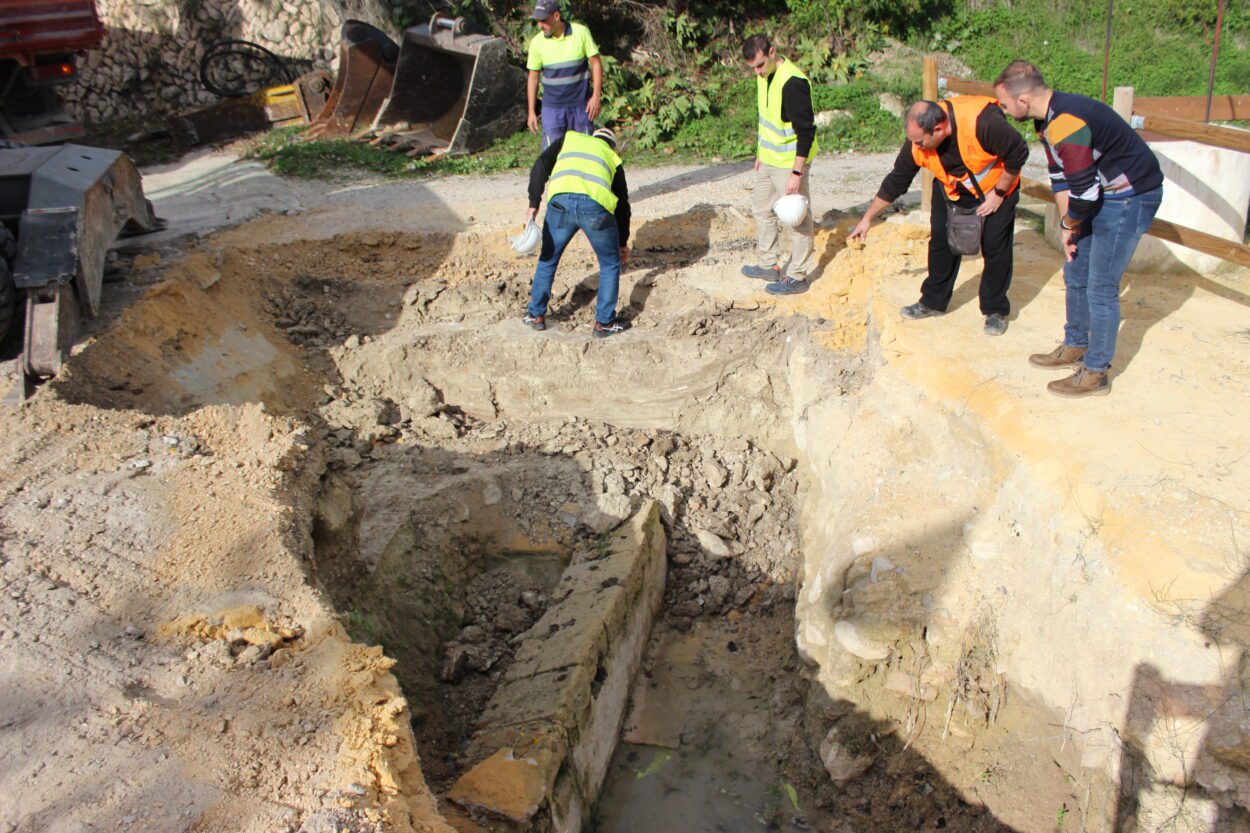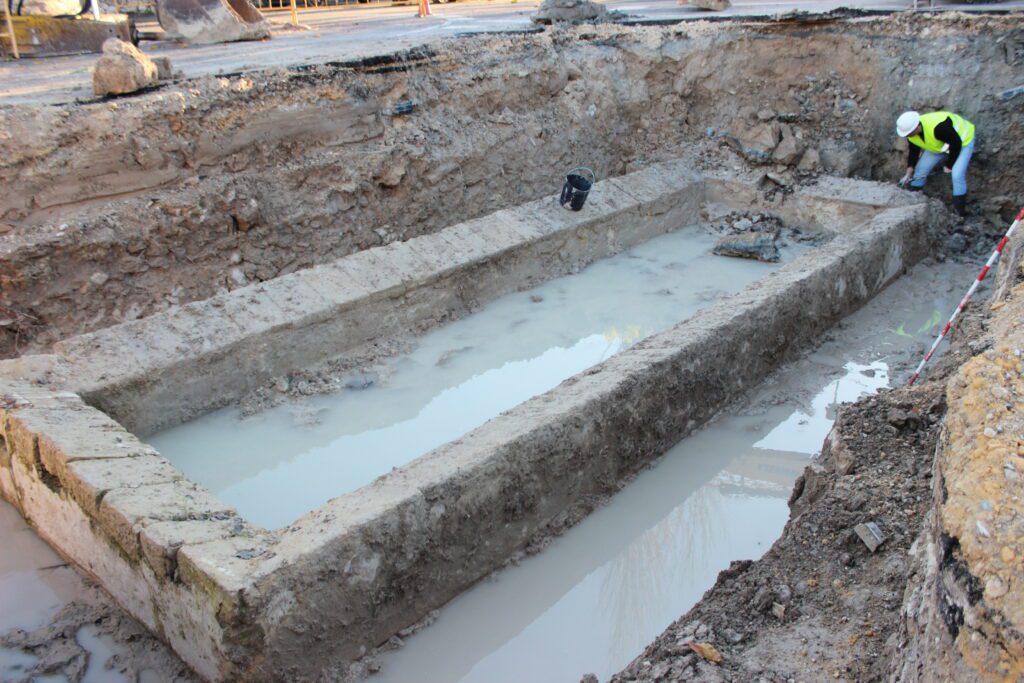- It is 9 metres long, which is consistent with the oral testimony of the elderly people interviewed.
- The excavation coincides with the centenary of the first written evidence of the existence of the washing house in 1924.
When in February 2023 the Office of Patrimony of Benitatxell discovered the first remains of the washing house of l’Abiar, everything seemed to indicate that its state of conservation, after 50 years underground, was good. Today, with the entire structure uncovered after three days of excavations, that prediction is even better: ‘this discovery, in the field of restoration, is a ten. It is in excellent condition’, said Humberto García, who, together with Alejandro Gomis and Adrián Rodríguez, is part of the team of archaeologists in charge of the excavations, obviously very excited.
Its walls and tiles have been perfectly preserved despite the fact that this traditional construction was buried when a road was opened in the 1970s. It is 9 metres long, which coincides with the oral testimony of the elderly people who were interviewed, especially the women (Maria, Teresita, Isabel, Lola and Pepe), who pointed out that in the past, when they went to wash clothes in the washing place, six women were placed on each side and three more at each end.

If these data are inspiring, it is even more so the fact that the excavation coincided with the centenary of the first written evidence of the existence of the washing place in 1924. In Rosa Seser’s essay ‘Memorias sanitarias de los pueblos del distrito de Dénia conservadas en el Archivo Municipal de Dénia. 1984-1924 (III)’ published in the IECMA’s research magazine “Aguaits”, there is a mention to l’Abiar washing place: “There is no market or slaughterhouse; there is a washing place in l’Abiar that uses rainwater for its use”.
Since then, l’Abiar washing place was a very important social space in the first half of the XX century, especially for the women of the time, who came on foot from the centre of the town to wash their clothes, taking advantage of the water from the wells. In the 1970s it was covered up to build the current road and the underground pipes, and until it was excavated it was not known whether the washing place was destroyed or simply tarmacked over it.
What has it been like to recover, step by step, this important social space for women?
At the end of 2021, the government team began to work on its possible recuperation. In November, the Patrimony area, in charge of Víctor Bisquert, requested a geo-radar study. The next step was to document the location and its characteristics through the oral testimony of different elderly neighbours. These testimonies were recorded and compiled, and in July 2022, the Council released the documentary ‘El llavador de l’Abiar. Memòria viva d’un poble’.
In February 2023, part of its remains were discovered in an initial excavation to locate it, but the ground water table constantly flooded the excavation area and filled it with mud and water. After this, different actions have been carried out to fit new pipes and channel the water, a task that has not been easy given its location in one of the lowest areas of the municipality and, therefore, with more underground water filtrations.
Moreover, it has been decided to wait for the ideal moment to carry out the works in order to reduce the traffic flow in the area as much as possible, given that in the last year various redevelopment works have coincided, such as those on camí de l’Abiar and Alicante avenue.
Now, after bringing the entire structure to light, the area is to be enclosed and the archaeological team will begin more thorough cleaning work by hand. In the meantime, the road will be a single lane, but with two directions of traffic, which will be indicated by road signs and markings to preserve road safety. The final steps will be the complete restoration of the washing place and its surroundings with the goal of making it a museum and adding value to it.



